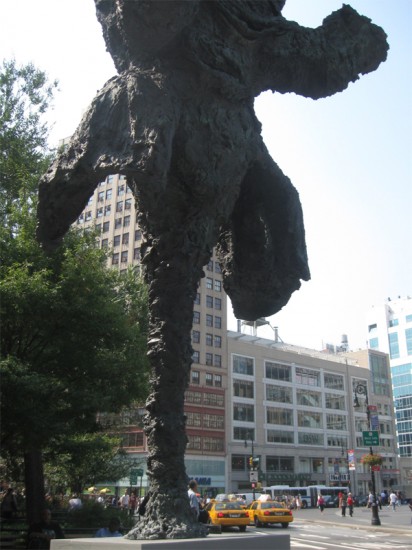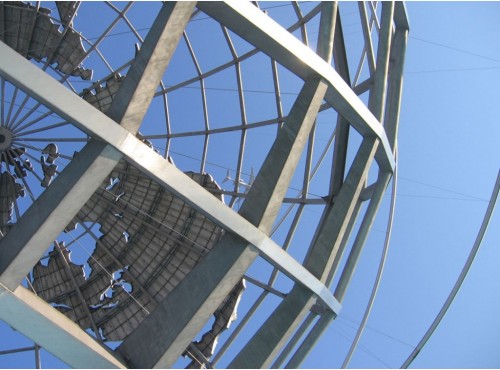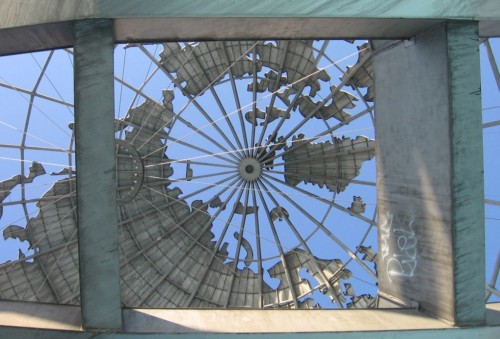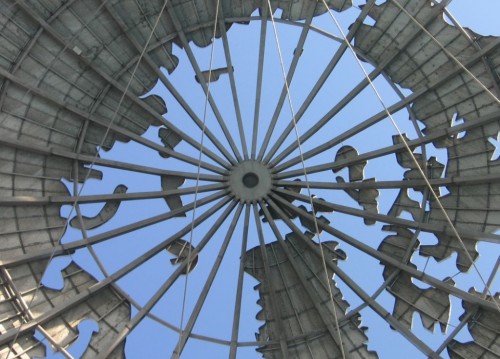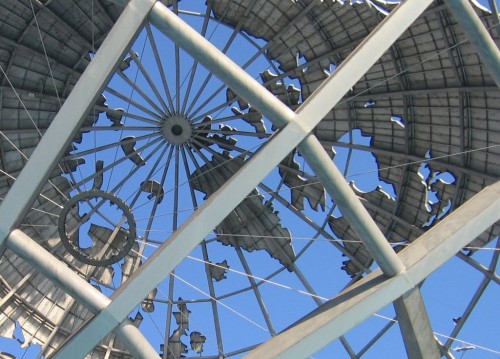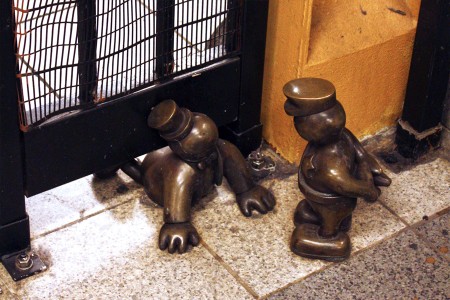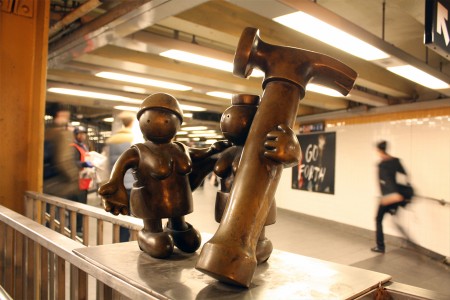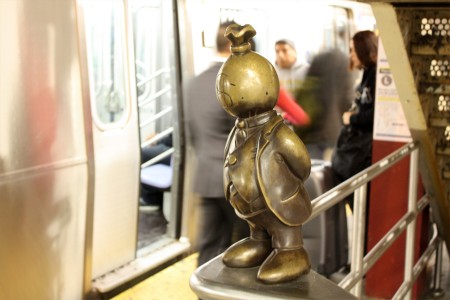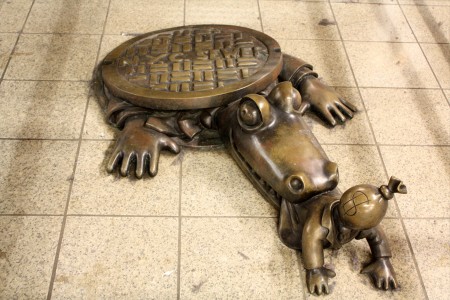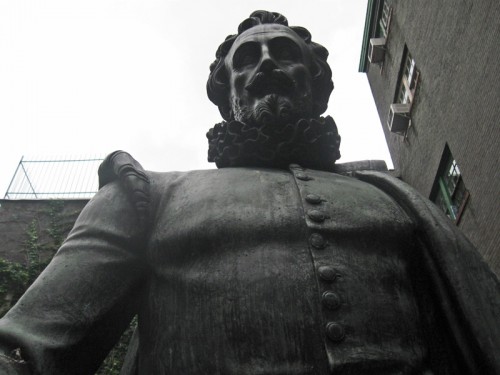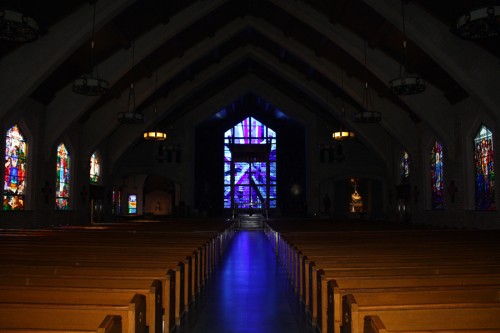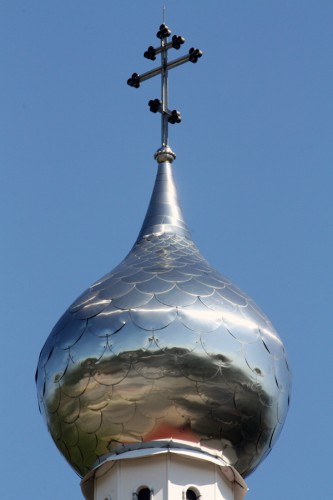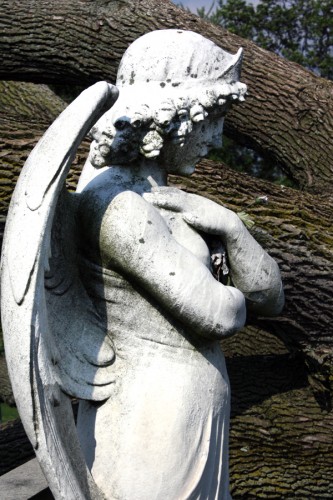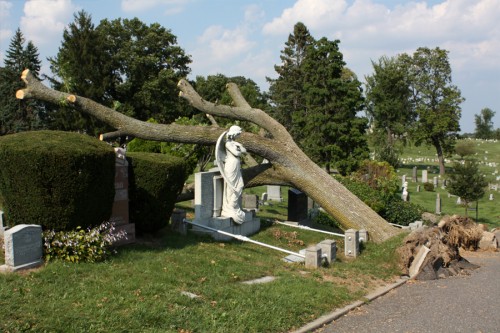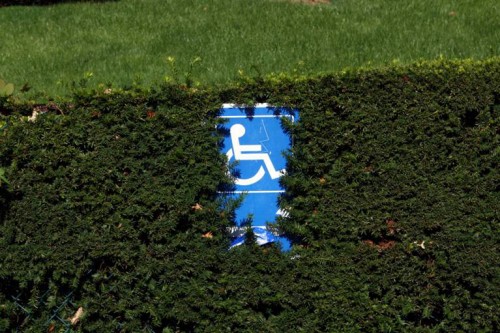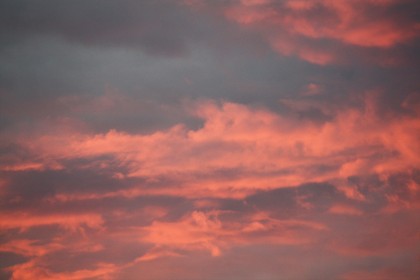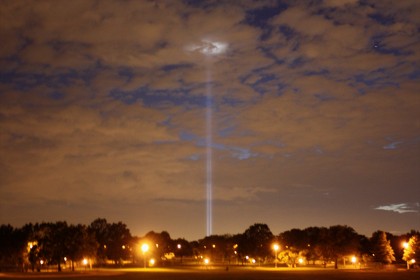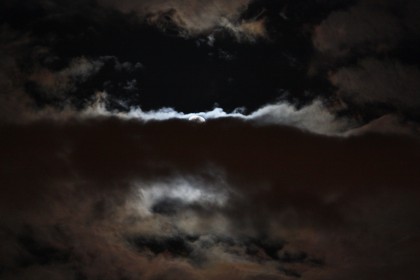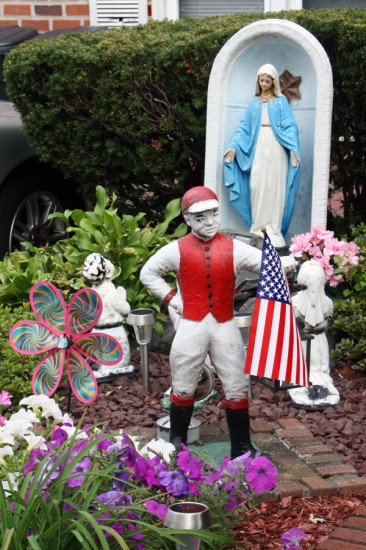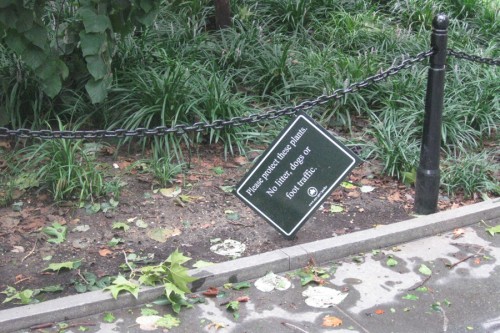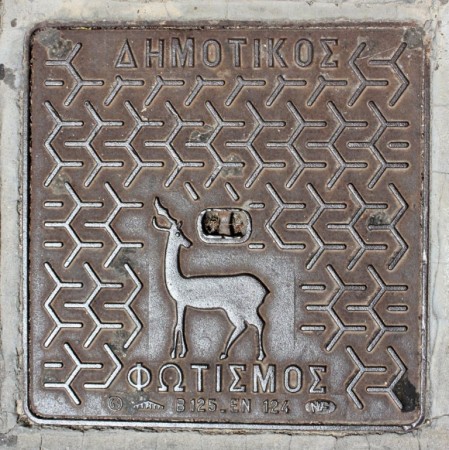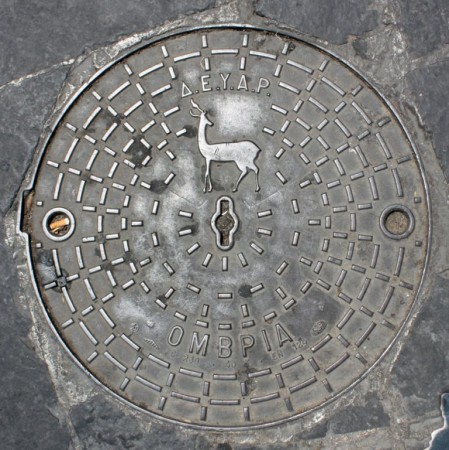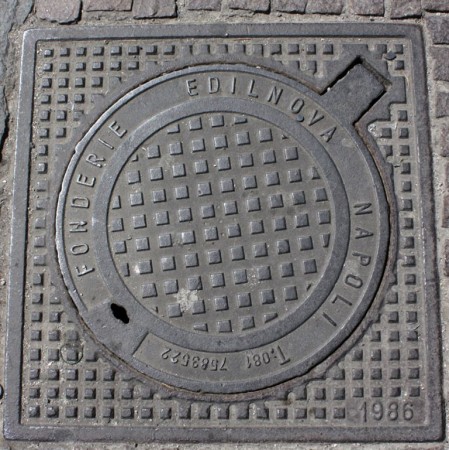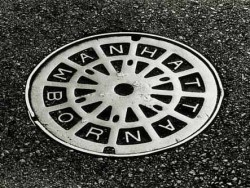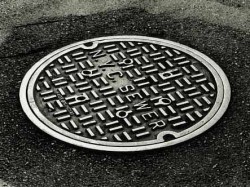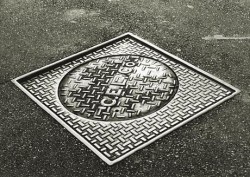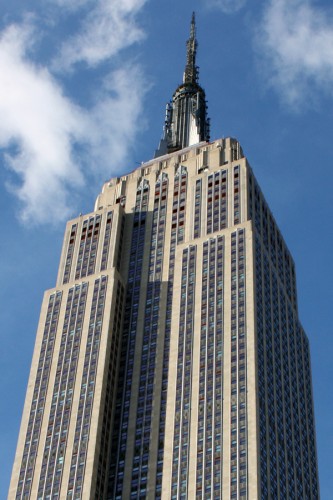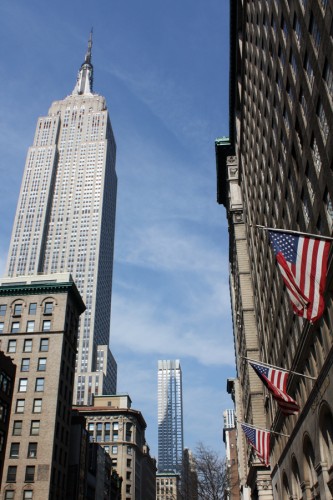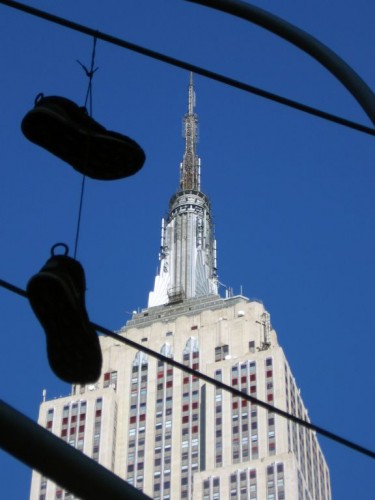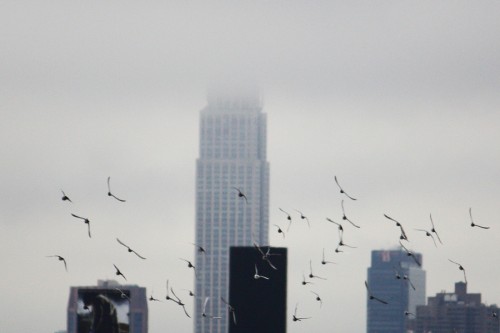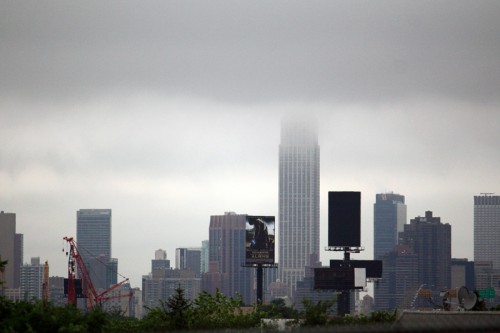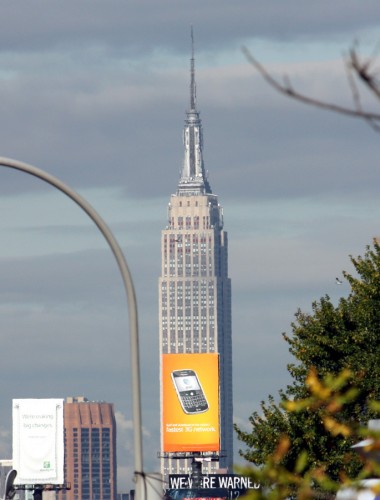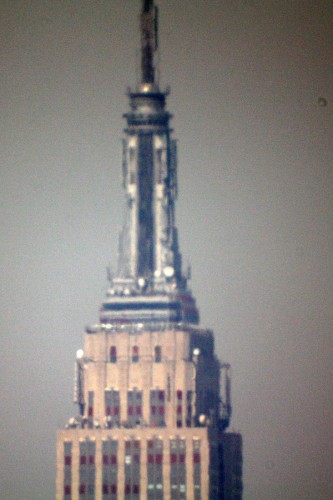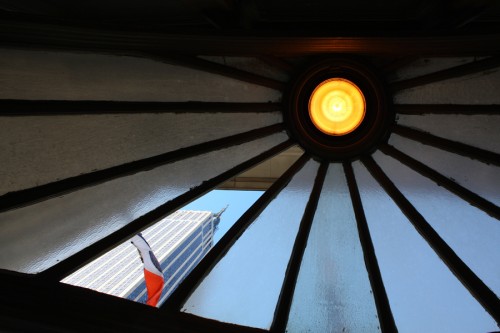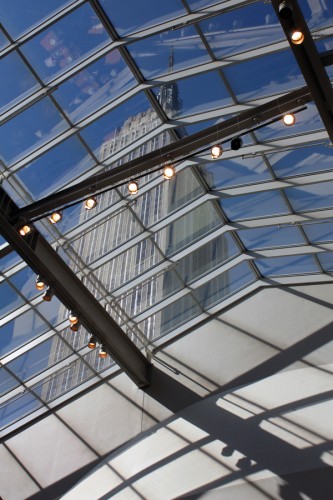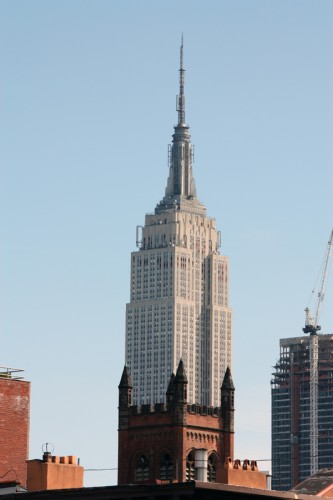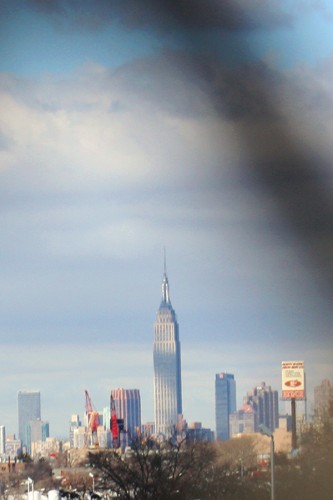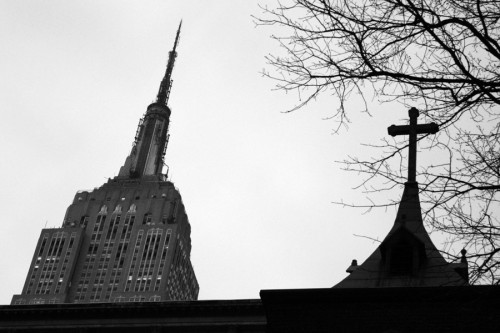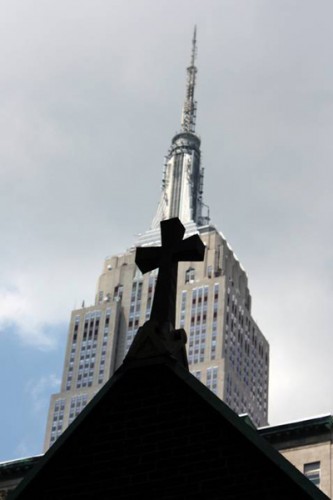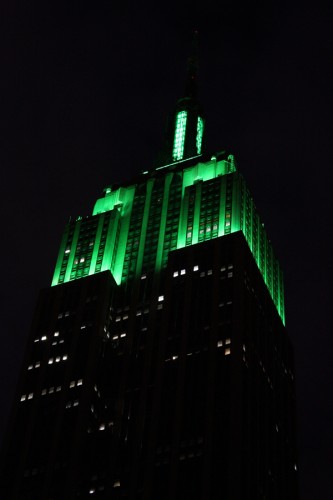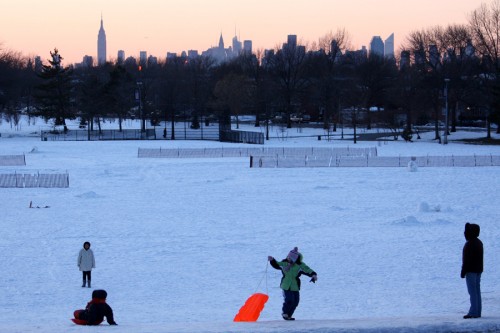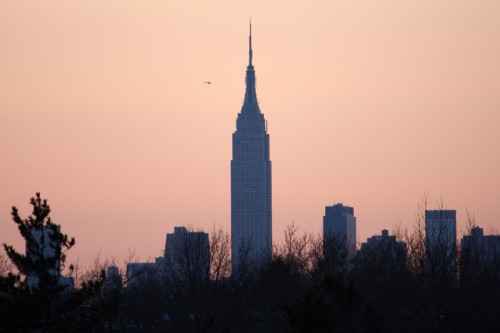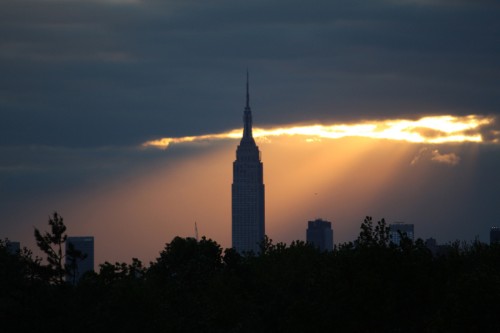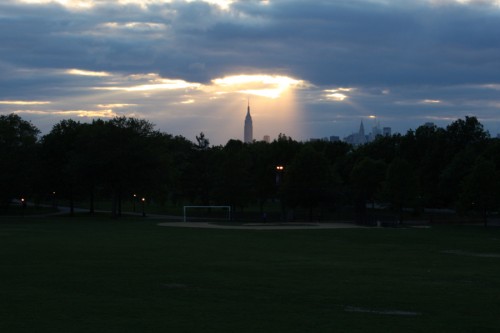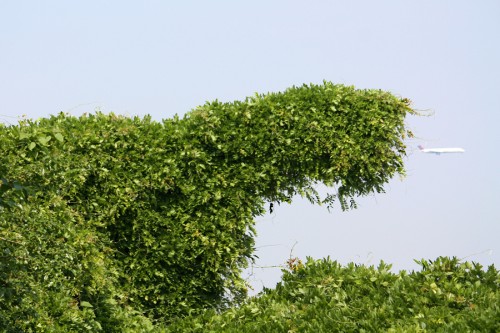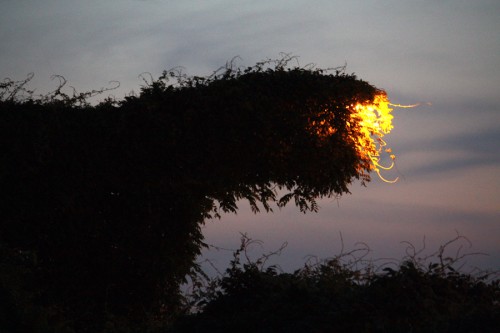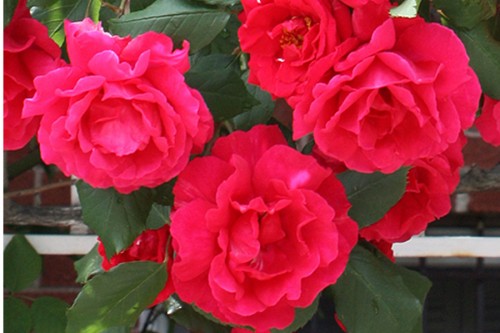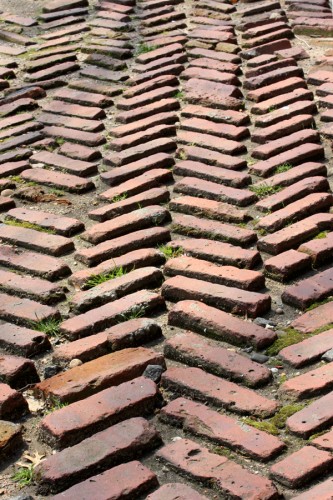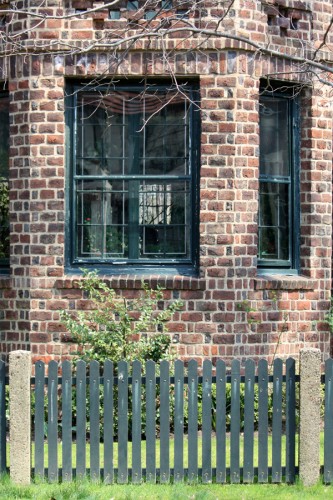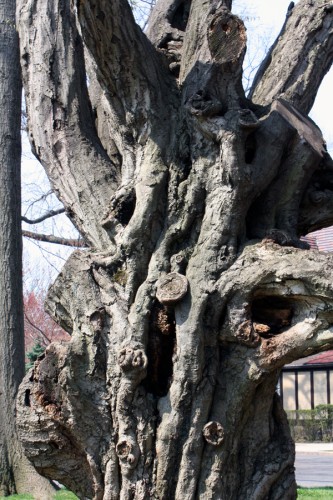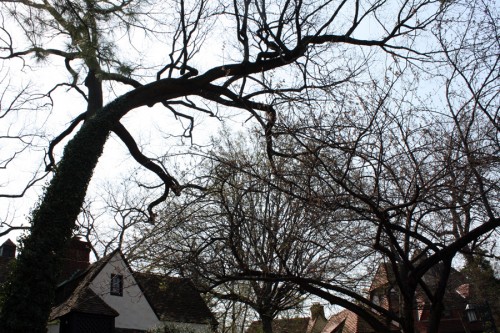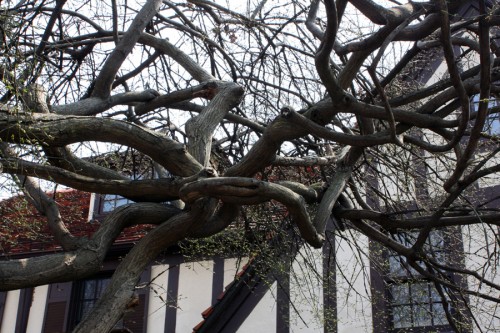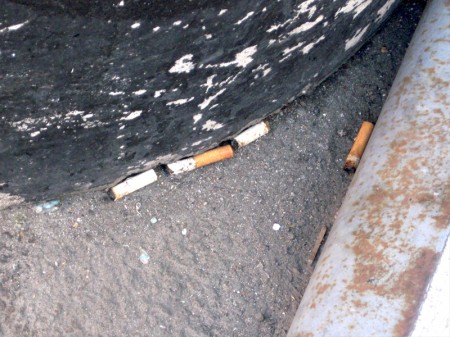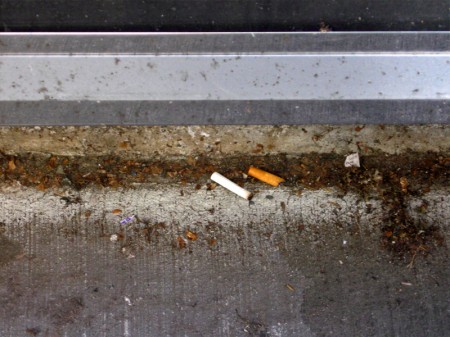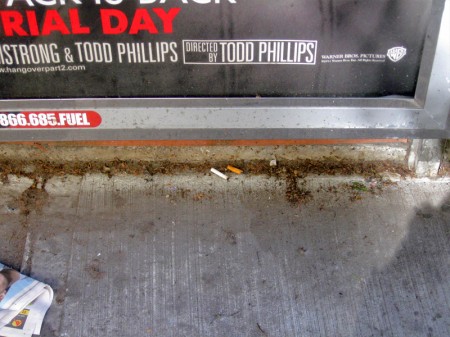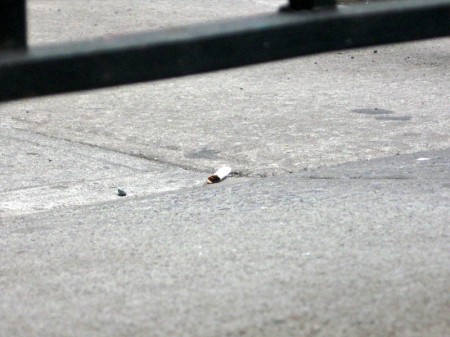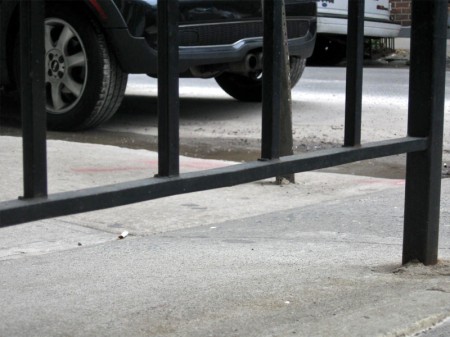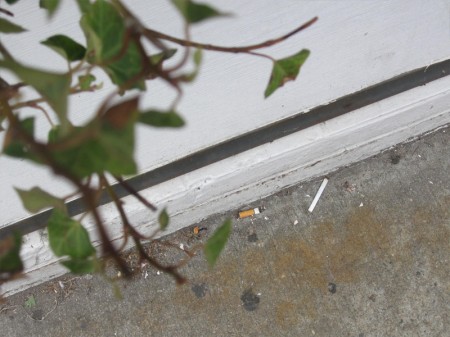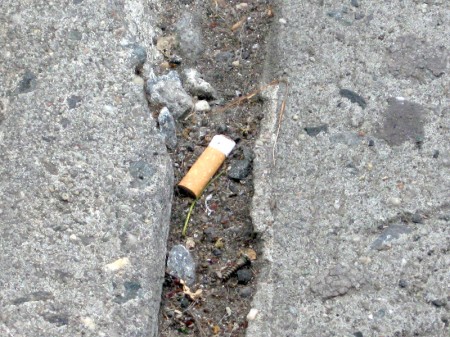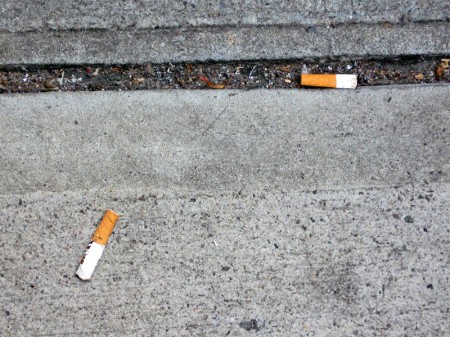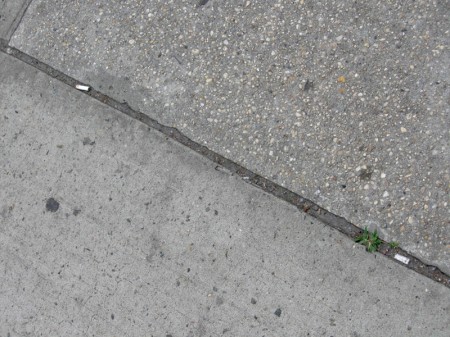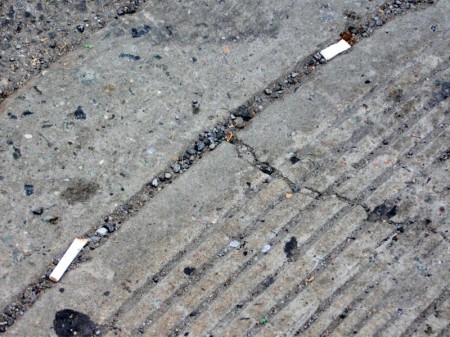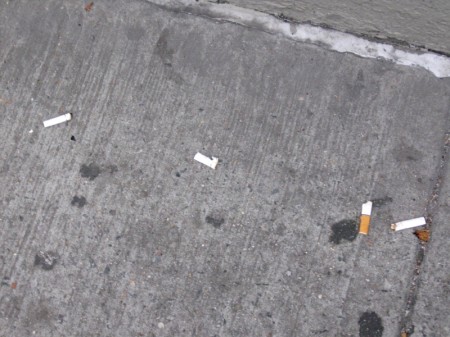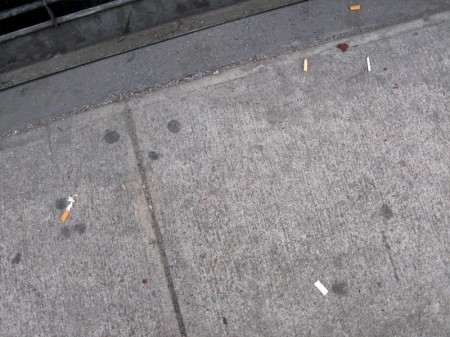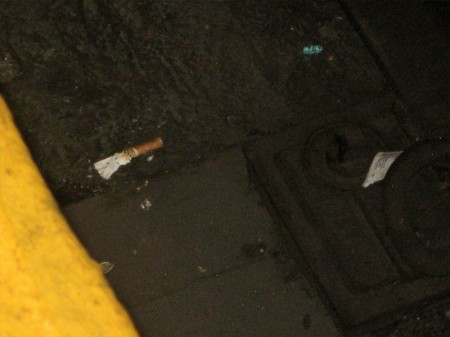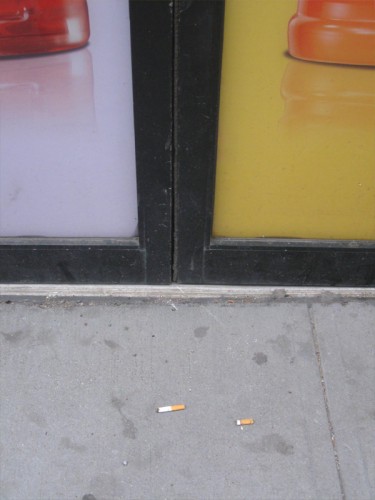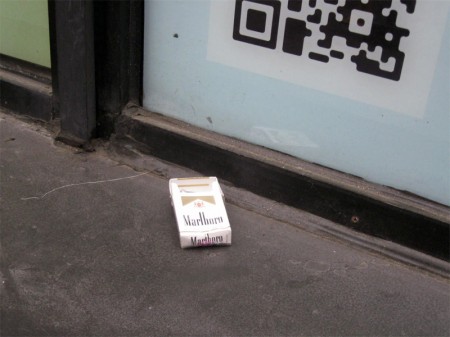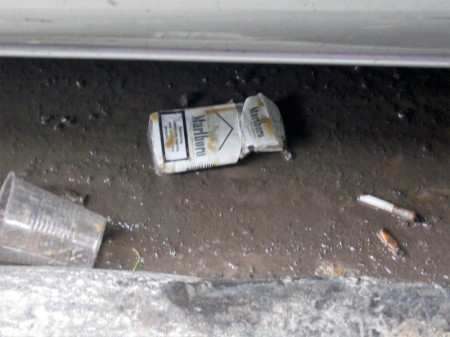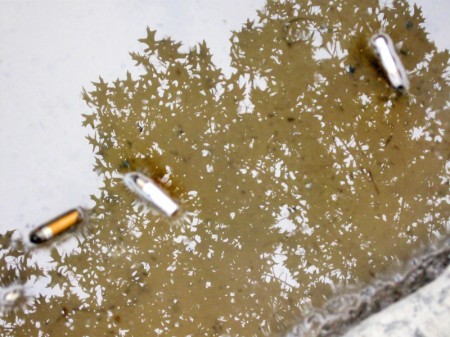Category ArchiveSteve Fisher
Photos &Steve Fisher 09 Oct 2011 08:06 am
Public Sculpture
- Here are three pieces of Public Sculpture that New Yorkers see on a daily basis and probably don’t see as they move right on by.
One that stands out is this balancing elephant just off U-nion Square park.
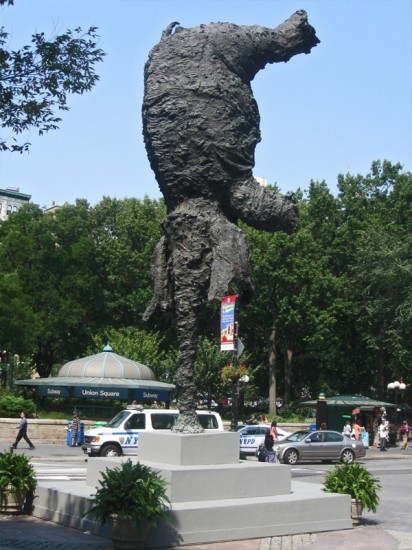 1
1Spanish artist Miquel Barcelò has contributed a
gravity-defying elephant to U-nion Square. The 15,000 pound,
26-foot tall bronze sculpture, “Gran Elefandret”, has traveled from
Madrid and Barcelona and now sits amidst the transportation and
cultural bridge between Uptown and Downtown Manhattan.
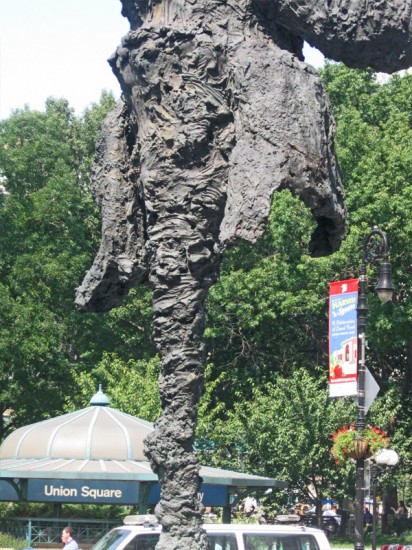 2
2
Brought to NYC by the Marlborough Gallery in conjunction with the
U-nion Square Partnership, the elephant balances on its trunk with
its four legs outspread above its sagging skin. “The Gran Elefandret”,
completed in 2008, is a continuation of the zoological themes found
in much of Barcelò’s former work. In addition, the detail of the
textured skin recalls the artists’ highly tactile, layered paintings,
many of which take the form of sculptures on canvas.
He draws inspiration from nature, from artists such as Jackson Pollock a
nd Willem de Kooning, and from his time in West Africa.
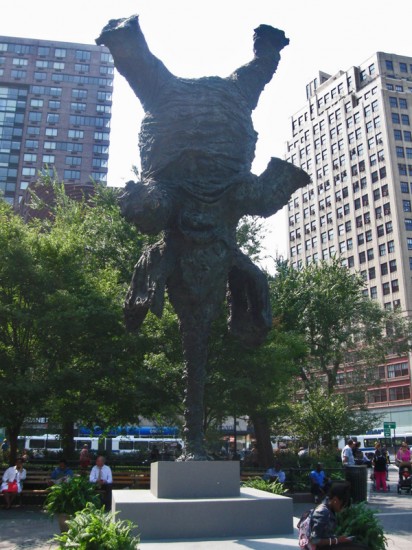 3
3
Born in Mallorca in 1957, Barcelò has been an active artist since the 1970s.
He was a part of Taller Llunátic which voiced its socio-political opposition to
the Spanish government during the 1970s and also pushed the boundaries
of the established art world. Barcelò now collaborates with the Fundación
Vicente Ferrer and the Eyes of the World Foundation and participates in projects
for Sahrawi refugee camps. He has received international awards and
commissions during his expansive career as an artist.
The second and more permanent part of New York is the enormous “Unisphere” globe that arrived with the NY World’s Fair back in 1964.
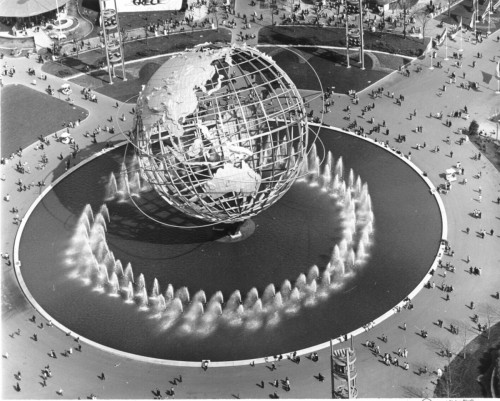 1
1This is pretty much what it looked like on opening day.
It sits in Flushing Meadow Park in Queens, NY.
It was one of the few buildings not destroyed
when the Fair ended in 1965.
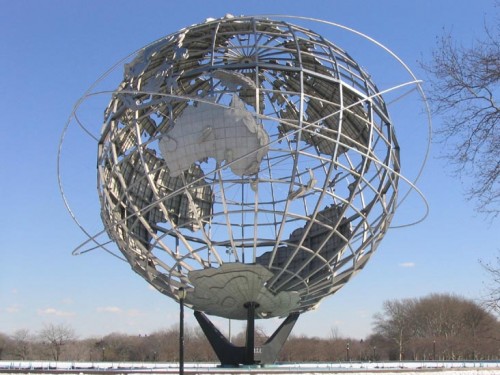 2
2
This is pretty much what it looks like today.
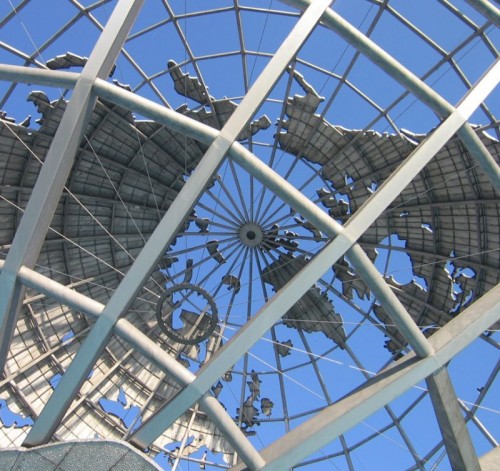 3
3
Steve Fisher sought a more intimate look in these remaining photos.
Steve Fisher also photographed these tiny sculptures in the 14th Street train station at 8th Avenue. They’re bronze and just a bit out of the way, so they can be easily missed.
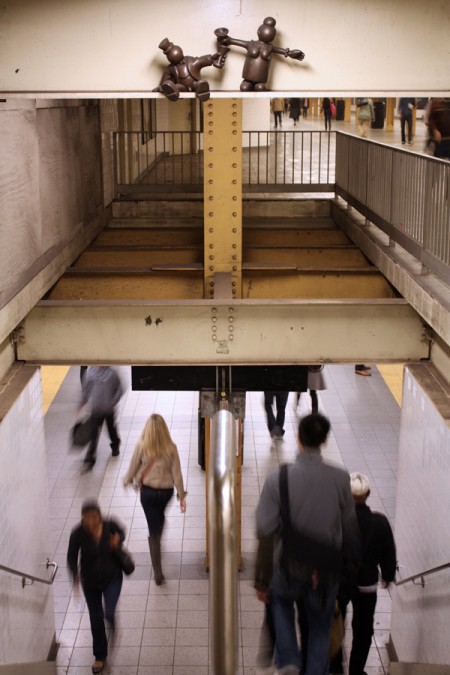 1
1
Greenwich Village is probably half owned by NYU. There are endless numbers of housing units for teachers and students spread out all over the area. One little enclosed area off University Place had this quiet little walkway on which I found the following statue.
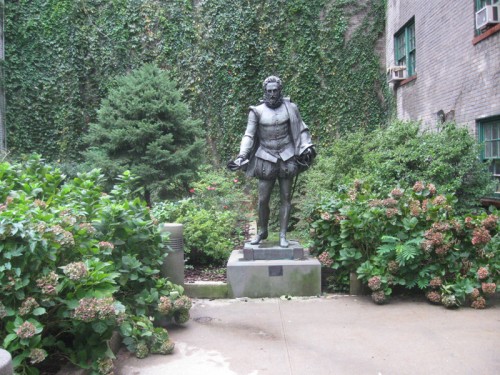 1
1
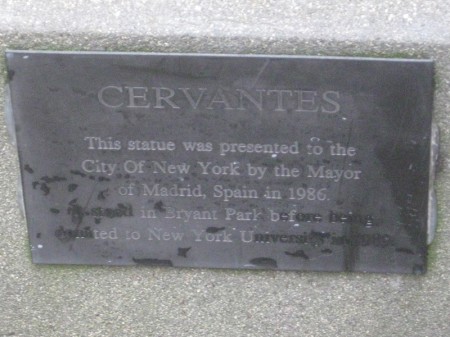 2
2
It reads: This statue was presented to the City of New York
by the Mayor of Madrid, Spain in 1986.
Presented in Bryant Park before being entrusted
to New York University in 1989.
Finally, we have this clock on Houston Street in the village that has a man waving. Very peculiar. This photo also came via Steve Fisher.
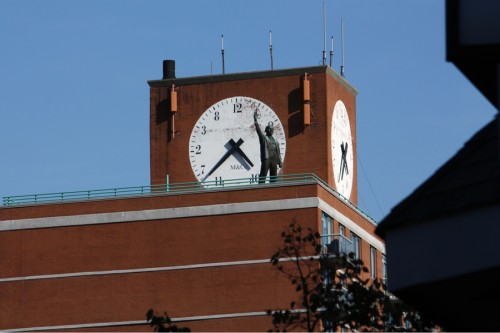
The story behind this building is simple.
It was named “Red Square” by Michael Rosen who built it.
Tibor Kalman was hired to complete it. The Statue of Vladimir Lenin
atop “Red Square” luxury apartments in NY City’s East Village is by
Sculptor Yuri Gerasimov and was Installed on the building in 1994.
Photos &Steve Fisher 18 Sep 2011 07:03 am
Textured Buildings
- The following first eight photos were sent to me by Steve Fisher. At first I thought there was a religious undercurrent to all of the photos, but then I realized they weren’t. But they felt connected. Steve tells me that the only real connection is that they were situated near each other. Within a few blocks he had photographed all of them. Yet, that religious feel still is there for me.
Steve had sent me the last four photos earlier, and I made the connection.
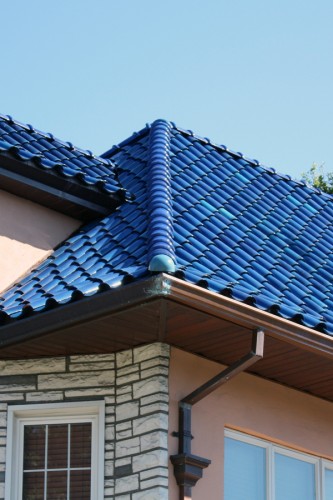 1
1
 2
2
Blue-tile roof of residential building on Parsons Blvd.
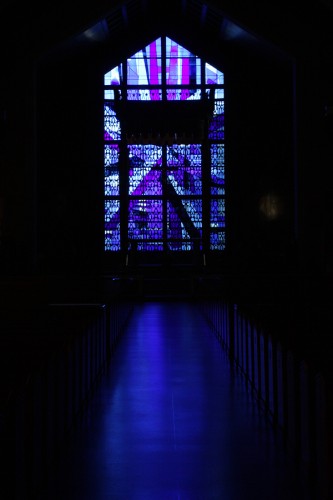 4
4
Blue stain-glass interior of the Mary Nativity
Roman Catholic Church on Parsons Blvd.
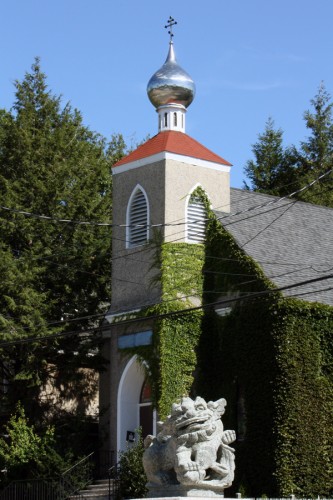 7
7
Domed Russian Orthodox church
on 147th Street and Cherry Avenue.
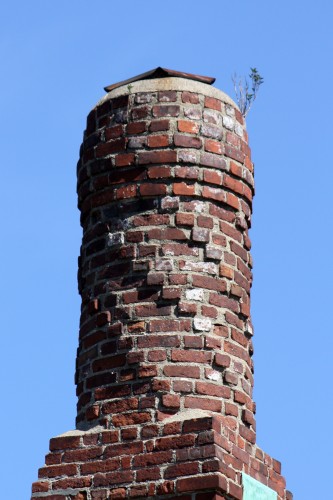 8
8
Brick chimney at Oak Avenue and Parsons Blvd.
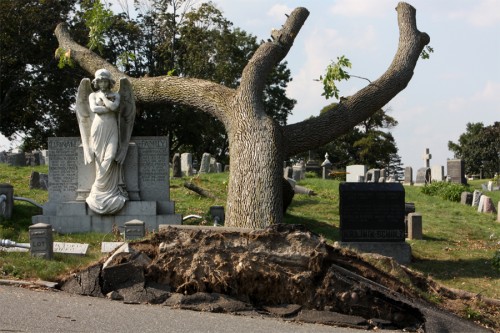 10
10
Another tree that fell victim to Hurricane Irene.
Many thanks to Steven Fisher for the photos.
Photos &Steve Fisher 11 Sep 2011 07:37 am
9/11
- I remember that on 9/11 everyone had to be out on the street as long as possible looking toward the empty space in the downtown sky. And no one talked. There was a hushed silence over the city.
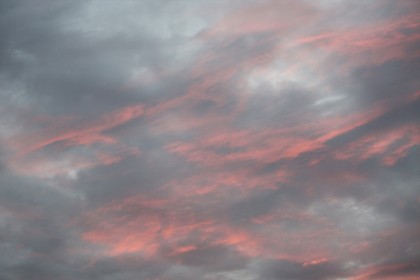
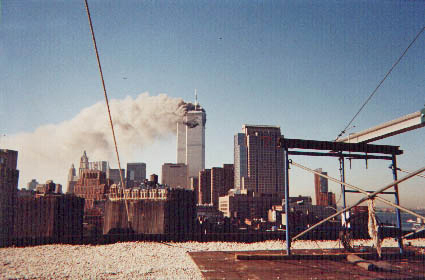

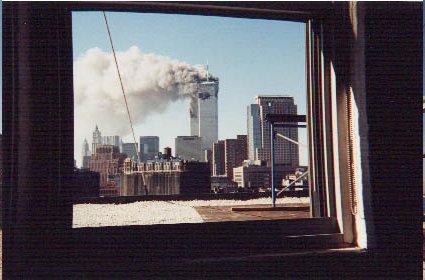
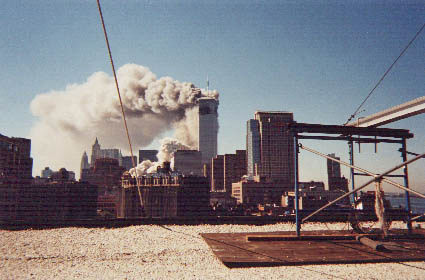
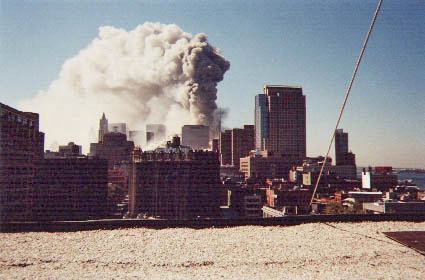
All pictures shot by Steve Fisher. The Towers burning
were shot with a disposable camera from a nearby office.
.
Photos &Steve Fisher 05 Sep 2011 07:28 am
Labor Day
Photos &Steve Fisher 04 Sep 2011 07:33 am
Remnants of Irene
- It seems like it was longer than a week ago that Hurricane Irene hit the East Coast. After 24 hours of non-stop talk on all the local channels about Hurricane Irene’s impending attack, it was something of a happy let-down to only have some heavy rain in NYC. By mid-afternoon, Sunday, things had turned sunny and Heidi and I took a walk down to the studio to see what was up, there. The two mile walk gave us a good view of lower Manhattan after the storm.
I took only a couple of photos and I mix those up with others by Steve Fisher.
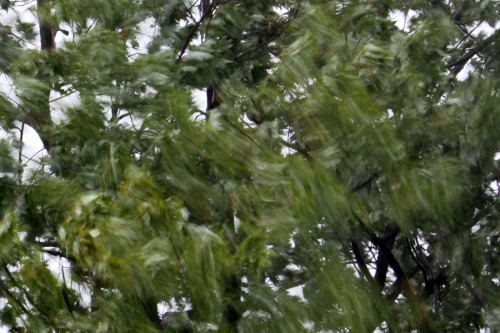 1
1Trees and bushes went crazy in the winds.
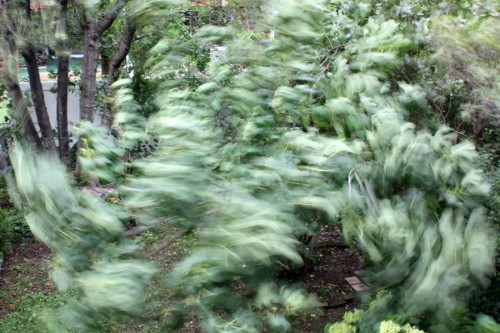 2
2
There’s something about a world that’s shaking so much
and the camera is perfectly still.
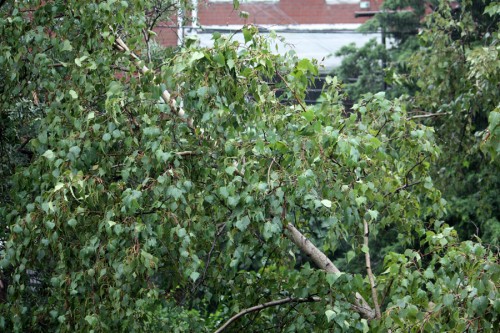 3
3
It left a lot of fallen trees and branches.
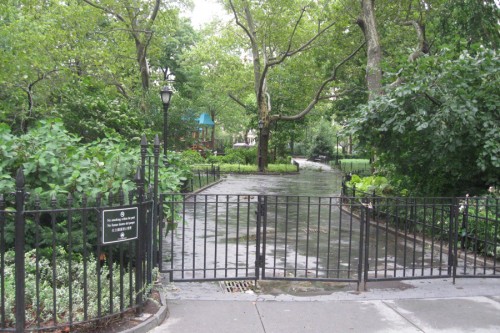 5
5
Madison Square Park was closed for all the fallen and falling branches.
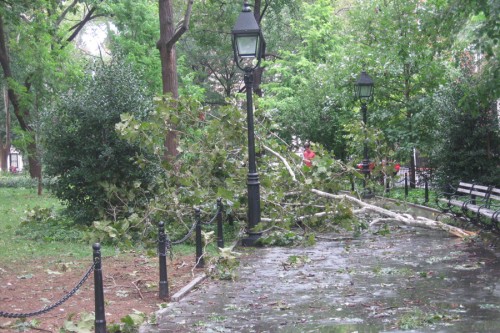 6
6
In Washington Square Park you could see the damage.
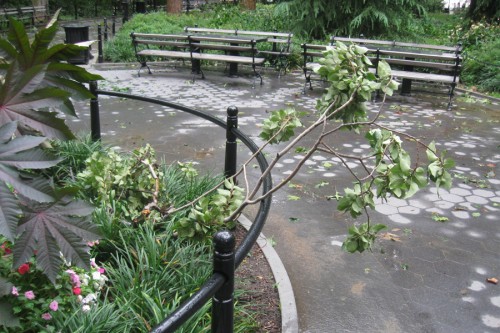 7
7
Branches and tree limbs were everywhere.
1,2,3,4,9,10,11 by Steven Fisher.
The other four by me.
Photos &Steve Fisher 28 Aug 2011 07:21 am
European Manhole Covers + recap
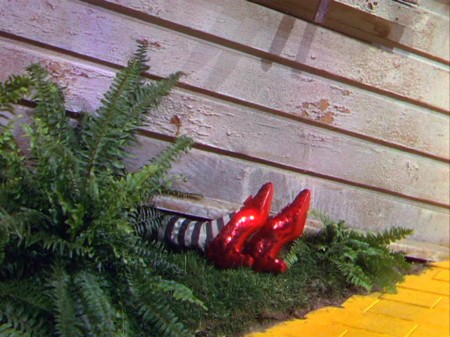
11am follow up: Just got the news from my superintendant who said there were no problems. No flood, no debris, no broken windows. All I have to do is put the books back and the rugs on the floor and we’re back in business. Funny that this Hurricane wasn’t as bad as the storm we had two weeks ago. We had 6 inches of rain from the hurricane and 2 inches from the storm, but the storm was incessantly heavy; the hurricane was on and off. It gave the sump pumps time to push whatever water out.
7am report: I’ve been inside all night Saturday and this morning, Sunday. The rain is beating loudly on the skylight. It comes in loud then soft waves. I assume the studio will reap the damage, but I won’t call the superintendant down there until this afternoon. He’ll tell me what’s what. I assume I’ll be mopping tomorrow.
We don’t expect the subway back until midday tomorrow (if the subway lines haven’t been flooded.) There’ll be a lot of walking after this storm passes later today today and tomorrow.
I don’t think it’ll be too bad.
______________________
- Steve Fisher sent me the following shots of manhole covers he photographed in Greece and Naples. This also gives me a chance to post a recap of my post from August 2007. Thanks to Steve for the pictures of European edition manhole covers.
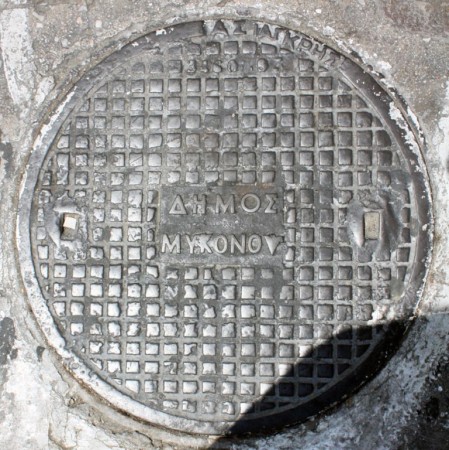 1
1from Mykonos
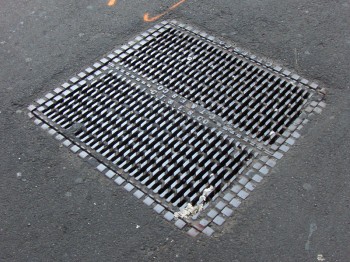 – When I was in the sixth grade, I had an extra-ordinary teacher who left me with a lot of memories. One of them was his reading of Edgar Allan Poe’s short story The Casque of Amontillado, which chilled us all to the bone as we sat in those little student desks absorbed and thrilled and forevermore fans of Poe.
– When I was in the sixth grade, I had an extra-ordinary teacher who left me with a lot of memories. One of them was his reading of Edgar Allan Poe’s short story The Casque of Amontillado, which chilled us all to the bone as we sat in those little student desks absorbed and thrilled and forevermore fans of Poe.
Another memory was his asking us all if we knew why manhole covers were round. After a number of stupid guesses, we were told the reason – any other shape would allow the covers to fall into the hole. If they were squared or triangular, they could be maneuvered onto their side until they fell in. Round objects wouldn’t fall.
He also told us that manhole covers in NYC were like snowflakes – no two were alike. This I found hard to believe until I started looking. He was right; they were all different in design. Markedly different in design. I looked for years and thumbed my way through many books admiring the designs I found.
Times have changed. Now they come in only a couple of designs.
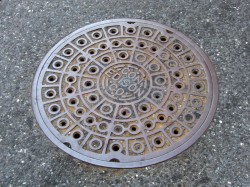 _
_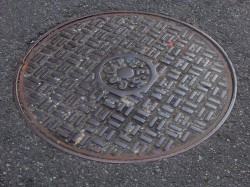
Con Edison is now the primary user for manhole covers, and they seem, these days, to have boiled down to four basic designs. See the two above and the two below.
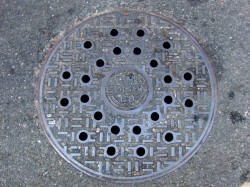 _
_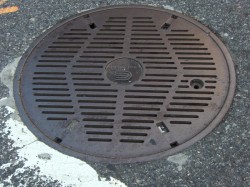
(Click any image to enlarge.)
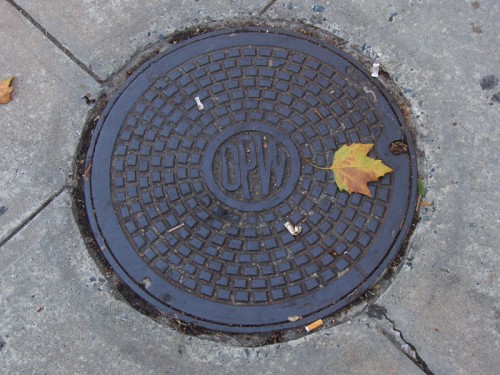
The Department of Public Works features this handy little design. I like its simplicity very much. the color also makes it unique.
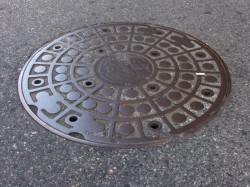 _
_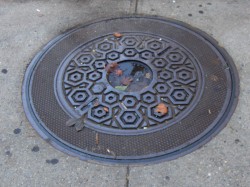
Above left you can see an older model that is wearing down. Parts of the design are blending into other parts almost making a new shape. Above right you see an interesting model. There’s a cover within a cover. The smaller model seems to fit within the larger model, and both can be pulled out. Very interesting. There were three or four of these in the same area around 23rd Street.
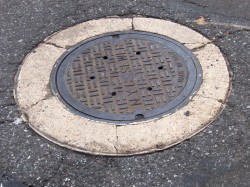 _
_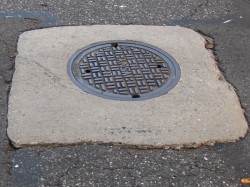
These manhole covers have been fitted into what were obviously larger spaces.
The concrete circle, above left, fills in for an earlier, larger model manhole cover.
Above right, you see a round cover in what was once a square hole.
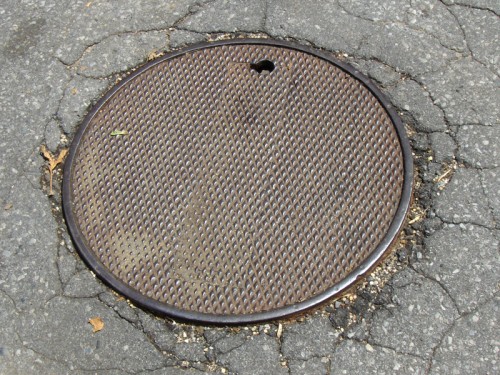
The busy minimalism of this design works very well with the cracked asphalt around it.
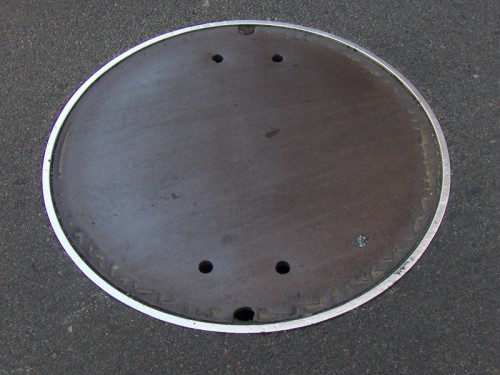
Here we have an interesting model. No design. I guess some would say that that’s
a design in its own right.
If you look on line, you’ll find a lot of information and photos of manhole covers. It’s amazing how big an industry is manhole cover watching. There are many books on the subject, many websites and lots of photographers who specialize in it. I have to direct you to one Roland Muhler. His work is stunning. I’ve posted three of his NYC photos just below. He has many international manhole covers on his site.
Another site which gives a lot of attention to manhole covers is Manhole Covers etc. The site is subtitled: “I’ve been looking down so long, I don’t know which way looks up.” Here you’ll find some history, links and photos from across the US as well as around the world.
Through this site I found a Russian site called Sewers of the World, Unite. There’s plenty of information and links here as well as some excellent photos. The images below are Russian designs from this site.
On the site, the history of sanitary sewers, I found this document (pictured to the right) 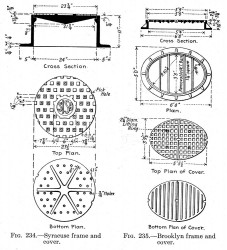 which gives a good view of a plan for some manhole covers. One cover is designed for Syracuse and another for Brooklyn.
which gives a good view of a plan for some manhole covers. One cover is designed for Syracuse and another for Brooklyn.
I also learned in my small amount of research that most of the covers done for NY’s manholes are made in India. I imagine the shipping charges would be enormous.
I presume that the manhole covers are now made of steel whereas they originally must have been molded of iron (and which would have broken when dropped.) I also learned that the sewers once had a hard glass built into the sidewalk openings so that light could enter. Pre electricity must have made working below ground difficult.
I should say more difficult. It’s not a job I’d like.
Photos &Steve Fisher 03 Jul 2011 07:32 am
Empire 4th
- I thought for July 4th, I’d forego any fireworks and put up some photos of pure Americana, at least my version of Americana. Steve Fisher has been photographing the Empire State Building forever. I’ve hesitated about putting up some of these beautiful photos over the years because I thought it might feel a bit repetitive to you. But this is one my favorite buildings (the Chrysler Building is my favorite), and it caught me off guard the other day. I was on 34th Street and a tourist asked me where the building was. We were about half a block away from it, so I just pointed. For some reason I got a twinge in my heart when I looked up at it. (As I said, I love that building.)
Immediately then and there I knew it was going to be the focus for today’s photo show. So, many thanks to Steve for digging out all these great photos.
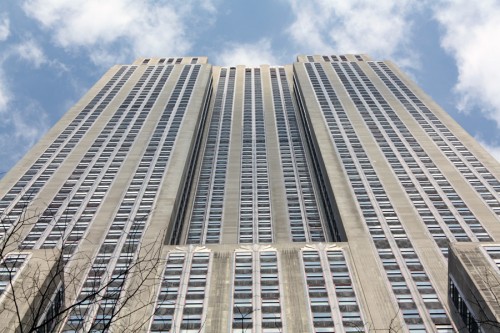 1
1
 7
7
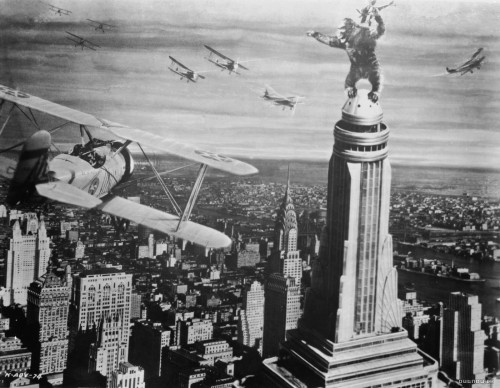 21
21
Tonight TCM is screening the original KING KONG at 8pm.
I guess their programmer was thinking along the same lines as me.
Photos &Steve Fisher 26 Jun 2011 07:35 am
Sunday Photo Growth
- Steve Fisher had sent me the following three photos over the last year or so.
This week they ended up in the NY Times.
First this one, then this one.
He took the pictures in Queens, an overgrown street lamp being swallowed by a fern.
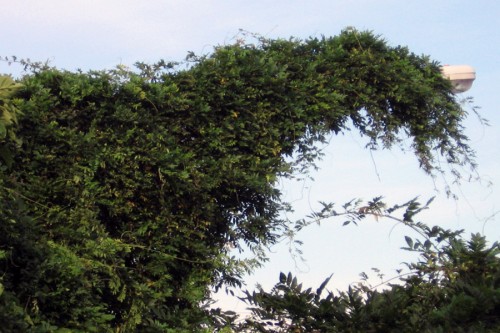 1
1
Congratulations are in order. Steve’s photos always belong in the NYTimes.
I’m glad to post them, even when they don’t make it to that paper.
Here are some other recent photos Steve took of alternate local fauna.
 1
1
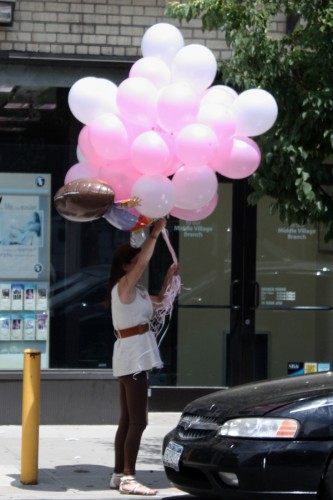 10
10
And just for good measure we have the
ballooons to celebrate.
.
They’re all beautiful, and they’re all appropriate now that we’ve entered the first days of Summer.
Photos &Steve Fisher 22 May 2011 06:59 am
Falling Flowers + Textures
Photos &Steve Fisher 15 May 2011 07:15 am
Smokes
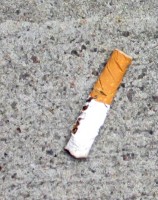 - Mayor Bloomberg has had an all-out war going on cigarette smokers. They’re no longer able to smoke within restaurants, bars, or public parks; they also can’t congregate outside of buildings anymore. The price of a pack of cigarettes in NY is about $11 in a retail drug store like CVS, I can’t imagine smoking a pack a day without being rich. (My father used to smoke three packs a day! I’m not sure he’d be able to afford the bad habit today.)
- Mayor Bloomberg has had an all-out war going on cigarette smokers. They’re no longer able to smoke within restaurants, bars, or public parks; they also can’t congregate outside of buildings anymore. The price of a pack of cigarettes in NY is about $11 in a retail drug store like CVS, I can’t imagine smoking a pack a day without being rich. (My father used to smoke three packs a day! I’m not sure he’d be able to afford the bad habit today.)
Given the intolerance for smokers in this city and the high price of maintaining the habit, it’s a surprise that everyone hasn’t already quit smoking. But all we have to do is look downward, and we can see that there is still an abundant number of people smoking. You can’t move two feet without stepping on or over some worn out butts. (It was in Canada that I saw homeless people gathering the butts to refashion their own cigarettes from the left-over tobacco in the cigarettes they found. That’s something I’d only seen in films from the Depression era US.)
People treat the outdoors as if it’s their own personal ashtray. That was always the worst of the habit that I saw. Butts fly out car windows, get smashed on the sidewalks and curbs, onto stairwells and subway tracks. So it was an easy photo target for me to shoot the detritus of the NY smokers. Here’s the result of some casual photos shot during the week while walking home.
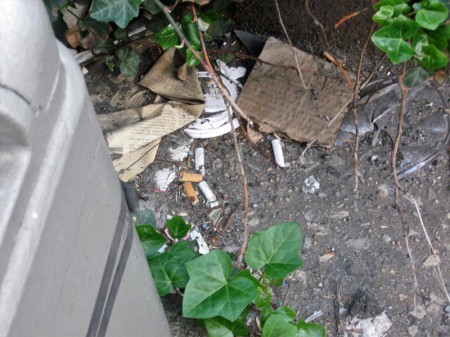 1
1Flora, fauna, butts and coffee cup caps.
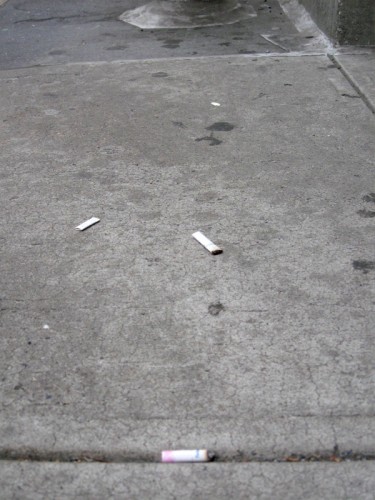 8
8
Butts seem to enjoy nestling in the pavement guides.
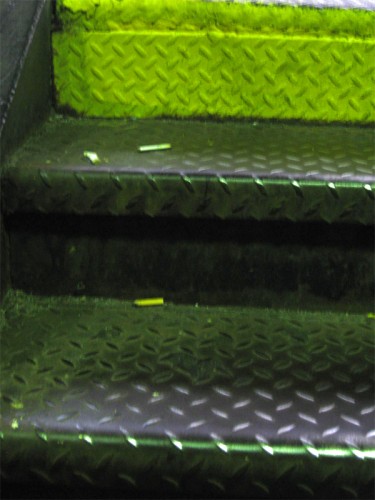 15
15
Heading down the subway steps.
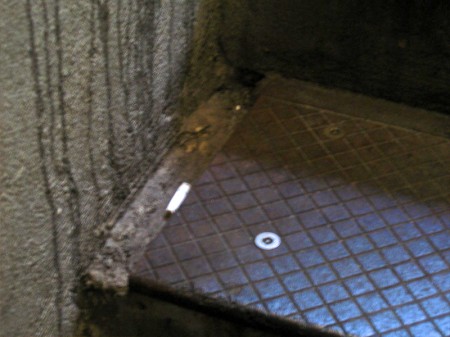 16
16
Farther downstairs in the subway.
